Sharing is caring!

This Vegan Korean Spicy Korean “Pork” (Jeyuk Bokkeum 제육볶음 or Dwaeji Bulgogi 돼지불고기) is marinated in a delicious gochujang-based sauce with sweetness from freshly grated Apple, ginger, garlic, and an extra kick of spice from gochugaru or Korean chili pepper flakes.

What is Spicy Korean “Pork” (Jeyuk Bokkeum or Dwaeji Bulgogi)?
Okay so it might be a bit confusing but this dish has a few names used. These 2 are what I know of—Jeyuk Bokkeum (제육볶음) and Dwaeji Bulgogi (돼지불고기).
Jeyuk (제육) and Dwaeji (돼지) both means pork, Bokkeum (볶음) means stir-fry, and Bulgogi (불고기) translates to ‘fire meat’. So the use of names here can be interchangeable since the dish can be cooked in different ways.
Ultimately it’s a marinated spicy pork dish, and from there, it really depends: you can cook the pork BBQ-style over a grill with charcoal or stir-fry it on a cast iron pan/stove-top griddle. The latter is something you can do at home if you don’t have a grill or want something for easier clean-up.
Spicy Pork is one of those Korean dishes I REALLY LOVE. There are also different versions of spicy stir-fried dishes in Korean cuisine such as Ojingeo bokkeum or Stir-Fried Spicy Squid with a really additicing sauce.
I’m really a big spice-lover so I’d go for a Spicy Pork or Dwaeji Bulgogi over a beef Bulgogi, any day.
You’ve also probably heard of Korean beef bulgogi, so what’s the difference between beef bulgogi and spicy pork Bulgogi?
Well, you won’t find spicy beef bulgogi in traditional Korean cuisine. Spicy pork Bulgogi is marinated in a spicy gochujang-based sauce, while beef bulgogi is marinated in a soy sauce-based sauce. Both have the nice hint of sweetness, that can easily be adjusted according to your taste.

THE SPICY GOCHUJANG-BASED SAUCE
But first, apple or pear? First off, this is a Fuji Apple and an Asian Pear. I use Asian pear for beef bulgogi, but for Spicy Pork Bulgogi, I prefer to use grated apple, since it has a sweeter note with a but of acidity to it.
Which is better? If you have a fuji apple, go for the apple. If not, then grated Asian pear would do.
Gochujang – any substitutes? I’m afraid there’s not substitute for gochujang if you want the traditional Korean flavour. Other chili sauces or paste could work to achieve the spice you want but do note that the flavour can change drastically from traditional Korean spicy pork.
So this sauce is composed of:
- 1 1/2 tbsp gochujang (see notes)
- 1 1/2 tbsp soy sauce
- 1/4 packed cup grated Fuji apple or Asian pear (see notes)
- 2-3 tsp gochugaru (Kored red chili flakes), adjust to desired heat (see notes)
- 1 tsp grated ginger
- 3 cloves garlic, minced
- 1 tbsp mirin or other rice wine
- 1/2 tbsp brown sugar, adjust according to desired sweetness
- 1/2 tbsp sesame oil
- Sprinkle sesame seeds
- —Like all of my recipes, feel free to adjust to your desired taste!

FOR THE “PORK”
If you don’t have access to dry soy chunks, you can use other plant-based meat substitutes from your local stores or grocery. Some of these may come frozen or chilled and you’ll need to prepare them depending on the package instructions.

Here’s the exact flat TVP/soy meat I used! PS. Link is not an affiliate link. I purchased these from Shopee and can be shipped in the Philippines.
For my US-based friends, here are similar meat substitutes that you can find on Amazon:
(these are affiliate links)
- Soy curls
- Plant based strips
- Vegan meat substitute (Just like ‘Chicken)
TO PREPARE THE “PORK”
- Rehydrate the pieces by placing these in a heat proof bowl and soaking in boiling hot water until doubled or even tripled in size. You can also rehydrate the chunks overnight. I simply place these in a container and add room temperature water to soak the chunks in.
- Squeeze out the liquid from each piece. If your soy pieces are the type that are in larger pieces, you can break these apart into small pieces/strips.
- Mix the rehydrated soy chunks/protein into the sauce. Coat the pieces well. Leave to marinate for at least 10 minutes. You can even refrigerate this and leave to marinate overnight or longer until ready to cook.





OTHER INGREDIENTS
- Neutral oil or sesame oil for stir-frying
- 1 medium white onion, thinly sliced
- 1 small carrot, peeled and thinly sliced
- 1/4 small head cabbage, chopped
- 2 scallions or green onions, sliced into 2” pieces

COOKING THE SPICY PORK BULGOGI
Heat a large skillet, cast iron pan, stove-top griddle or non-stick pan over medium high heat. Once hot, add in some oil. Stir-fry the onion and carrot over med high heat for 3-4 minutes until lightly browned and the carrots are tender.

Add in the spicy “pork” and cook down over med high heat for 4-5 minutes or until lightly brown and the pieces have absorbed the sauce. If you’re using a cast iron pan or griddle, keep an eye out and make sure to move the pieces around to make sure to evenly brown them and get a slight char, but be careful not to leave these to burn since the sauce has sugars that can easily burn.

You can add the cabbage and green onions halfway through cooking. I like to add the cabbage at the latter part of cooking to keep these crisp and not overcooked.
You can also serve this in a sizzling plate (if you used a non-stick pan) since sizzling plates can retain heat better.
Note: You can opt to cook yours directly on a cast iron pan if you have on large enough to fit everything.


HOW TO ENJOY YOUR KOREAN SPICY PORK
Serve your spicy pork with some rice, banchan (Korean side dishes) of choice, and some lettuce.
I love to wrap mine in lettuce with some banchan such as kimchi and cucumber. You can also add some rice and pack it in there!
Wrap it in the lettuce and stuff that piece of lettuce in your mouth hehe. Enjoy!


OTHER KOREAN RECIPES YOU MIGHT LOVE:
- “Beef” Bulgogi Bowls
- Vegan Kimchi
- Korean Beansprout Salad
- Bibim Guksu (Korean Mixed Noodles)
- Sundubu Jjigae (Korean Soft Tofu Stew)
- Kimchi Noodle Soup with Dumplings
- Kimchi Noodle Stir-Fry
- Jjajangmyeon
- Kimchi Pancakes or Kimchi Jeon
- Pajeon (Korean Scallion Pancakes)
Vegan Spicy Korean “Pork” (Jeyuk Bokkeum 제육볶음 or Dwaeji Bulgogi 돼지불고기)
Ingredients
“Pork” or Protein (See notes for other alternatives)
- 50 g dry soy strips , see notes for other alternatives
Gochujang-Based Sauce/Marinade
- 1 1/2 tbsp gochujang (see notes)
- 1 1/2 tbsp soy sauce
- 1/4 packed cup grated Fuji apple or Asian pear see notes
- 2-3 tsp gochugaru Kored red chili flakes, adjust to desired heat (see notes)
- 1 tsp grated ginger
- 3 cloves garlic minced
- 1 tbsp mirin or other rice wine
- 1/2 tbsp brown sugar adjust according to desired sweetness
- 1/2 tbsp sesame oil
- Spinkle sesame seeds
For Stir-frying
- Neutral oil or sesame oil
- 1 medium white onion , thinly sliced
- 1 small carrot , peeled and thinly sliced
- 1/4 small head cabbage , chopped
- 2 scallions or green onions , sliced into 2” pieces
- Rice cakes optional (see notes)
To Serve
- Sesame seeds for topping
- Steamed short grain rice
- Vegan Kimchi homemade kimchi recipe here
- Beansprout Salad see recipe here
- Spicy Cucumber Salad see similar recipe here
- Lettuce for wrapping
Instructions
“Pork” and Marinade
- You can watch the video below or see the photos above to see a step-by-step on how this dish is cooked.
- Rehydrating the soy/plant-based meat: Rehydrate the pieces by placing these in a heat proof bowl and soaking in boiling hot water until doubled or even tripled in size. You can also rehydrate the soy pieces overnight. I simply place these in a container and add room temperature water to soak the chunks in.
- Squeeze out the liquid from each piece. If your soy pieces are the type that are in larger pieces, you can break these apart into small pieces/strips.
- Meanwhile, prepare the sauce by mixing everything together. Feel free to adjust to your taste.
- Mix the rehydrated soy chunks/protein into the sauce. Coat the pieces well. Leave to marinate for at least 10 minutes. You can even refrigerate this and leave to marinate overnight or longer until ready to cook.
Cooking
- Heat a large skillet, cast iron pan, stove-top griddle or non-stick pan over medium high heat. Once hot, add in some oil. Stir-fry the onion and carrot over med high heat for 3-4 minutes until lightly browned and the carrots are tender.
- Add in the spicy “pork” and cook down over med high heat for 4-5 minutes or until lightly brown and the pieces have absorbed the sauce. If you’re using a cast iron pan or griddle, keep an eye out and make sure to move the pieces around to make sure to evenly brown them and get a slight char, but be careful not to leave these to burn since the sauce has sugars that can easily burn.
- You can add the cabbage and green onions halfway through cooking. I like to add the cabbage at the latter part of cooking to keep these crisp and not overcooked.
- Serve your spicy pork with some rice, banchan (Korean side dishes) of choice, and some lettuce.You can wrap your spicy "pork" in the lettuce with some banchan, and even some rice. Stuff the wrapped lettuce in your mouth and enjoy!
WATCH Video
Notes
DRY SOY STRIPS/OTHER ALTERNATIVES
Here’s the exact flat TVP/soy meat I used! PS. Link is not an affiliate link. I purchased these from Shopee and can be shipped in the Philippines. For my US-based friends, here are similar meat substitutes that you can find on Amazon:(these are affiliate links)
- Soy curls
- Plant based strips
- Vegan meat substitute (Just like ‘Chicken)
PEAR OR APPLE for the sauce/marinade
- I use Asian pear for beef bulgogi, but for Spicy Pork Bulgogi, I prefer to use grated apple, since it has a sweeter note with a but of acidity to it.
Which is better? If you have a fuji apple, go for the apple. If not, then grated Asian pear would do.
GOCHUJANG AND GOCHUGARU
- If you love spice, the more gochugaru (red pepper powder/flakes), the better (well at least for me because I love spice).
- You can also skip the gochugaru if you’re okay with the heat from the gochujang (chili paste).
- If you want more heat but don’t have gochugaru, you can add more gochujang (paste).
RICE CAKES
- If using rice cakes, you can stir-fry these along with the onions and carrot. I also recommend to double the sauce recipe if adding in rice cakes so you can get it nice and coated too!
NUTRITIONAL INFO
You can Pin these Images:








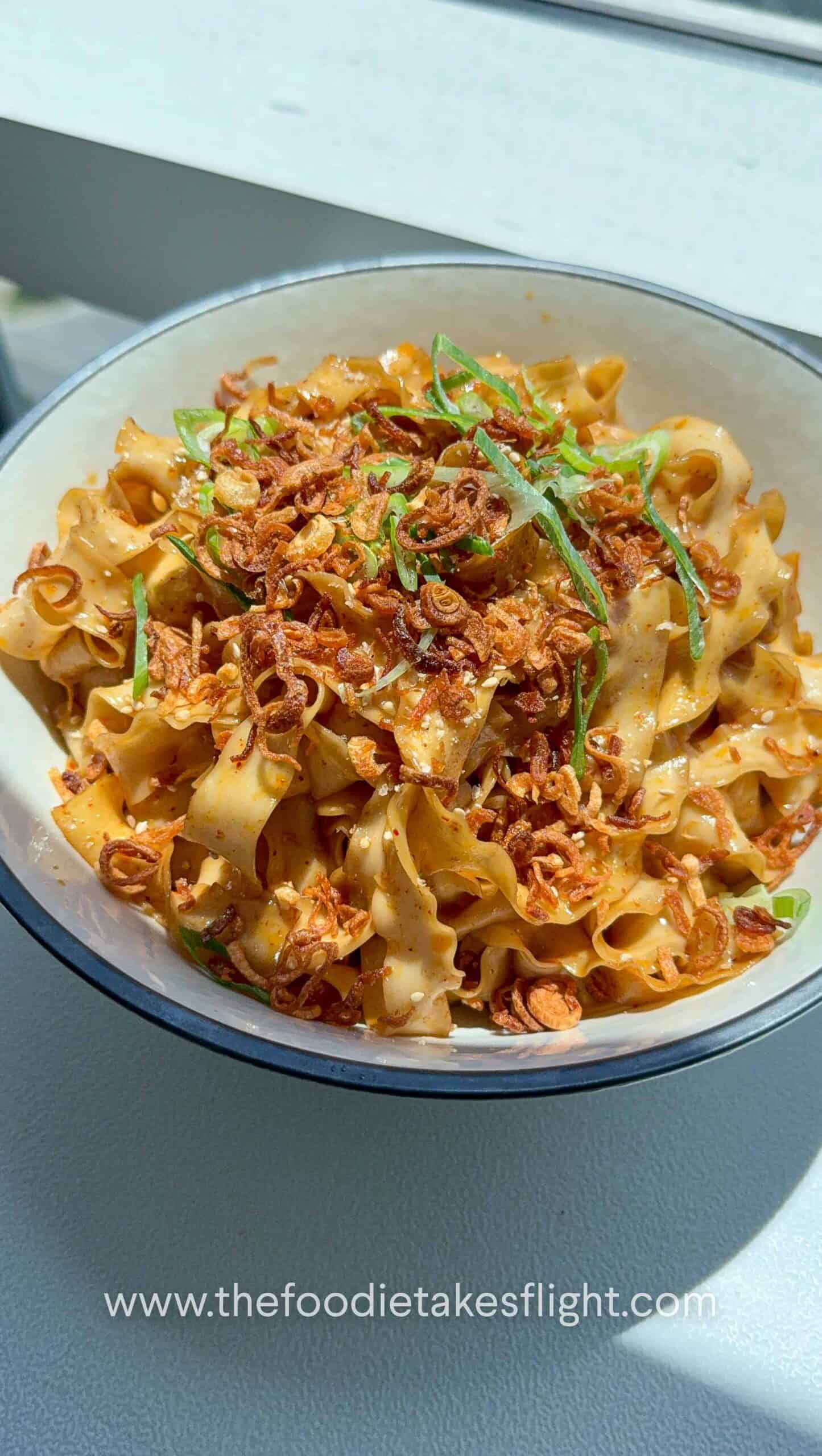
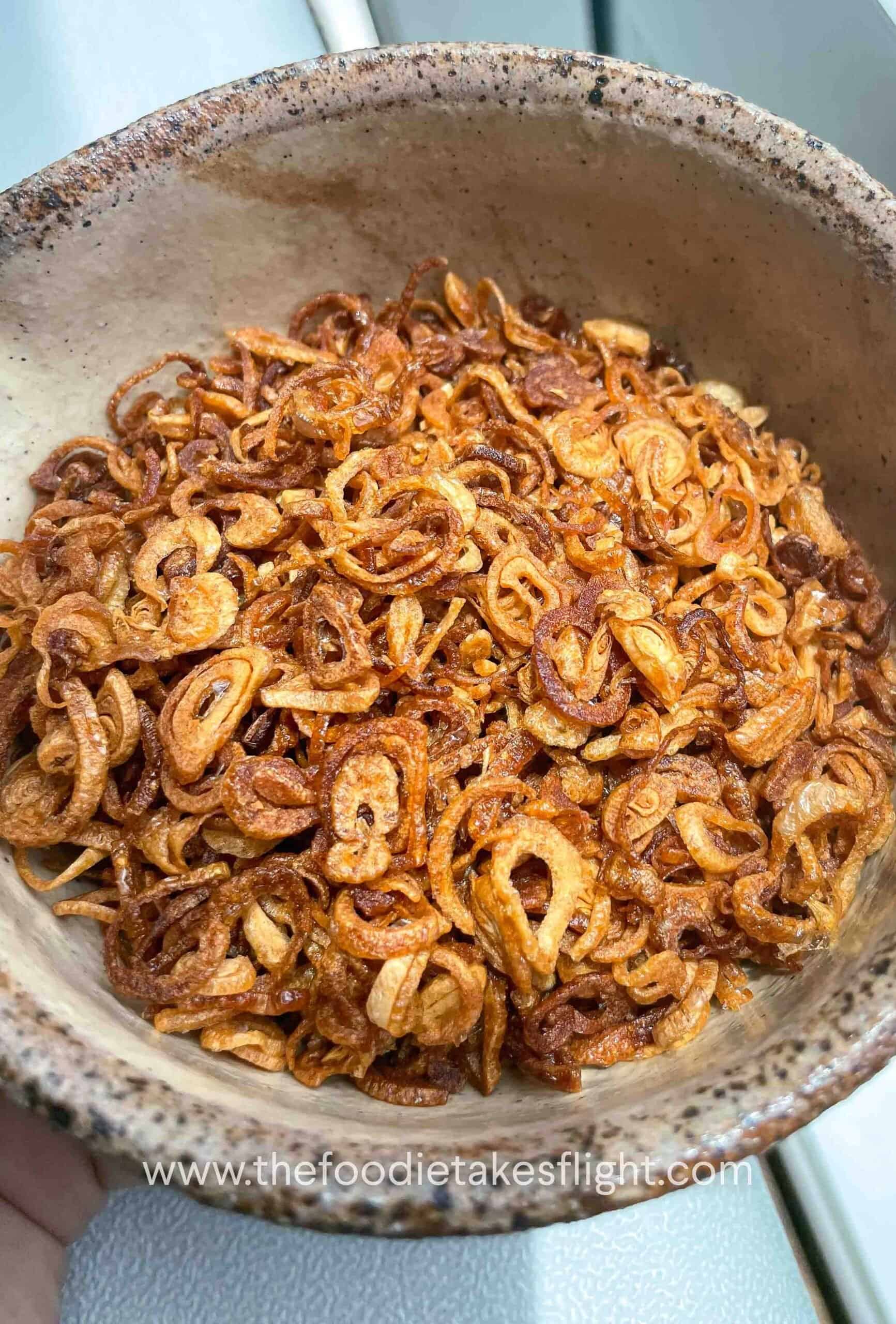
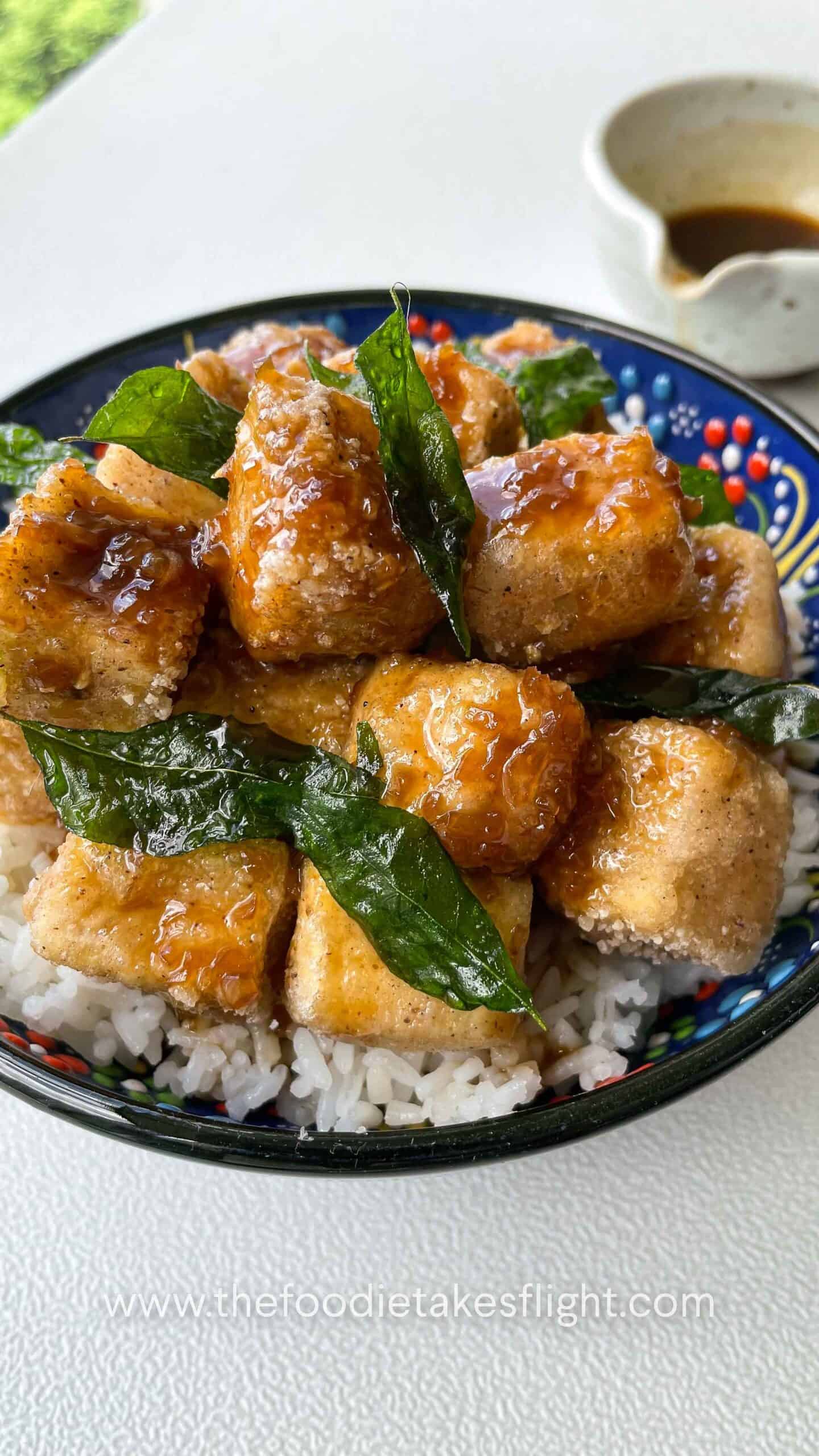
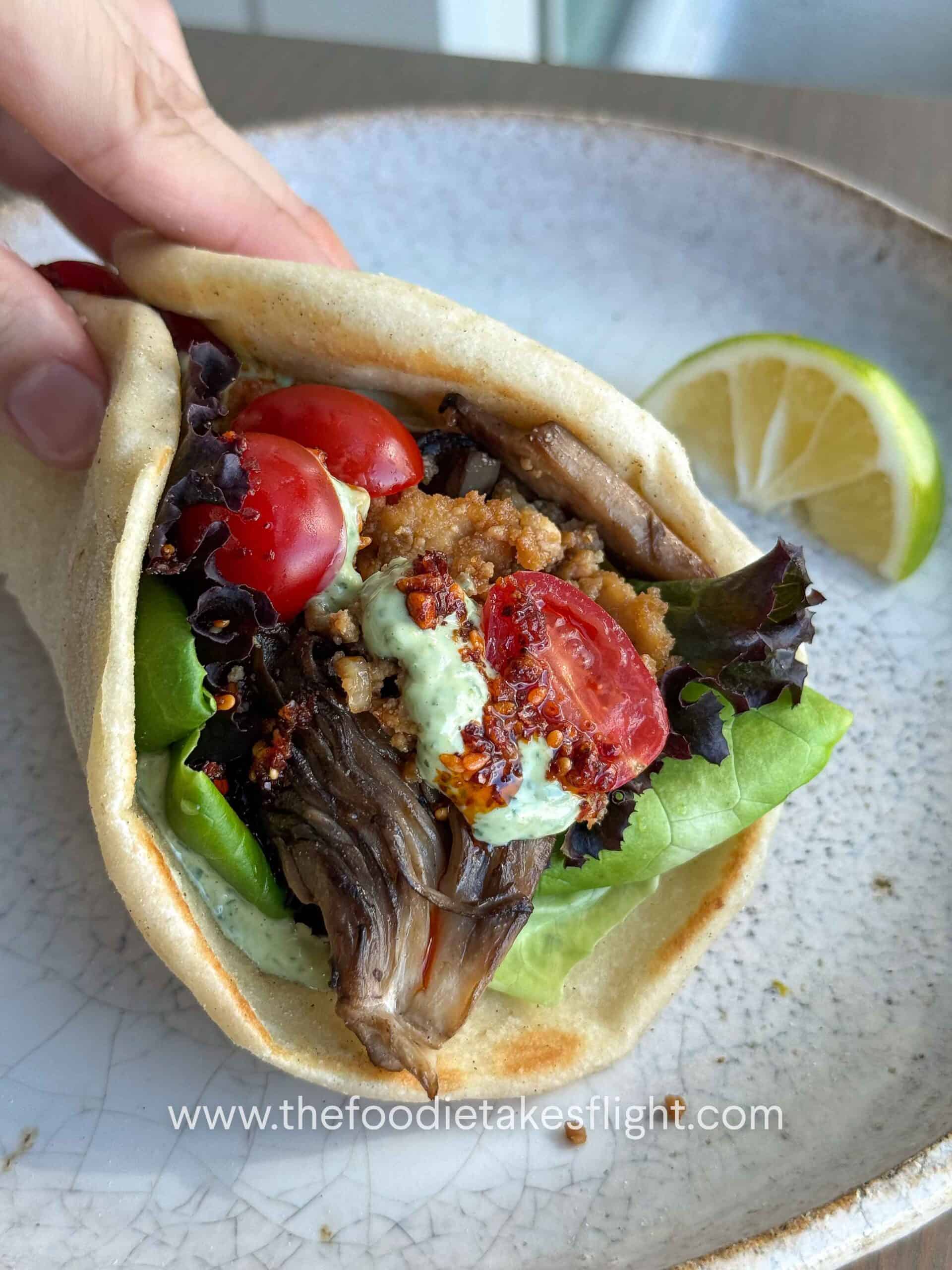
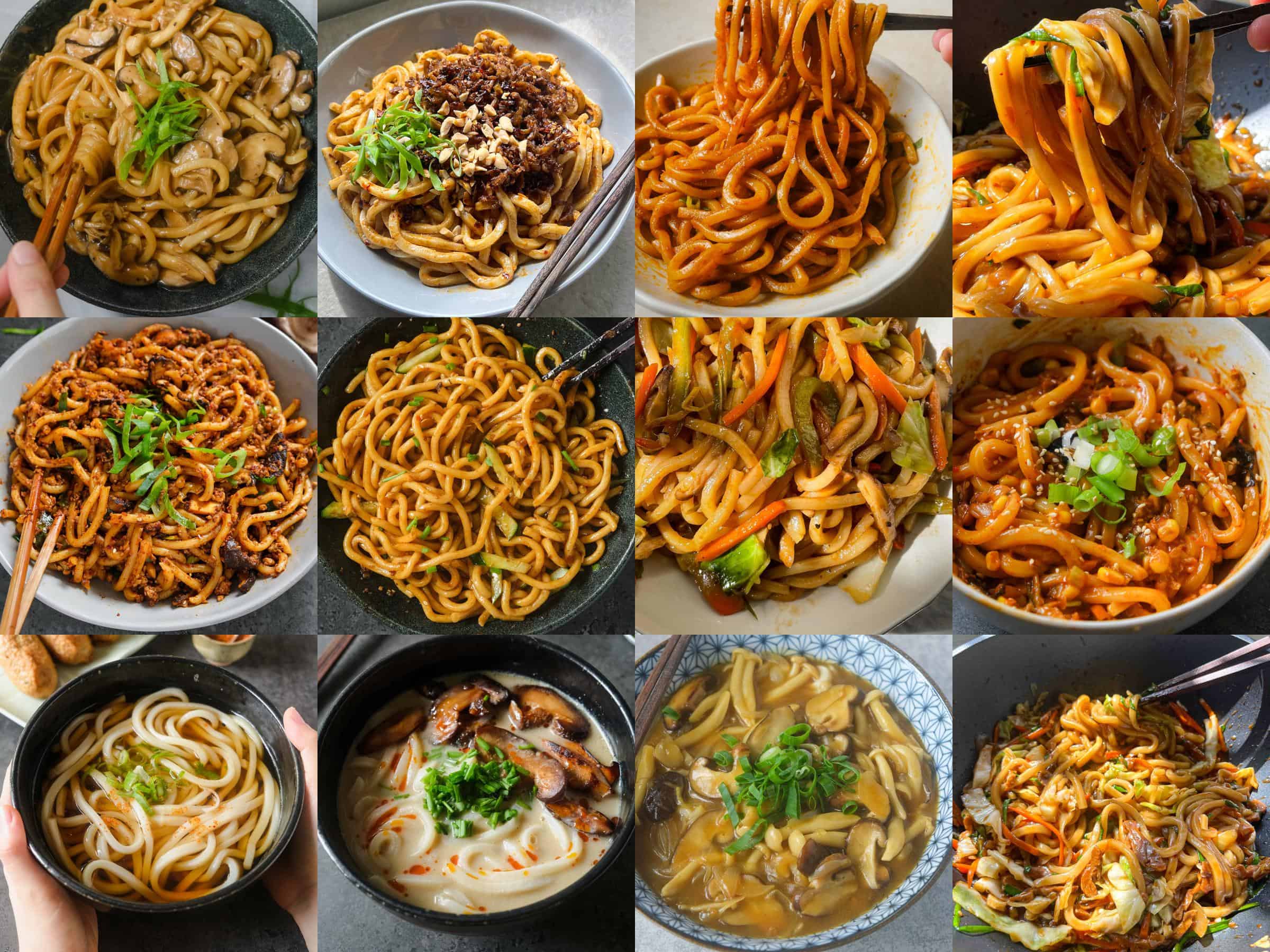
This Post Has 4 Comments
Easy and delicious!
Loved this. Very tasty and easy to make, I used Seitan though which I’d already made and needed to use I just sliced it very thin. I served this with your beansprout salad and your kimchi pancake what a great meal.
This is really so, so good. Had this yesterday with the Spicy cucumer salad and rice. I wrapped it in lettuce as you have recommended 🙂
Thanks a lot for your creat recipies…I am such a Asian food lover.
Warmest regard from Germany, Manuela
Danke Manuela, glad you liked it!! ◡̈